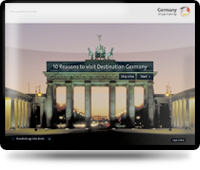Religious museums
- Rietberg Bible Village brings the Good Book to life
- Meersburg Bible Gallery
- Ziesar Castle
- German Bell Museum
- The Teutonic Order Museum at Bad Mergentheim
- Uncover the secrets of witchcraft and persecution at Penzlin Castle Museum
- Roggenburg Abbey Museum
- Cistercian Monks Museum at Walkenried Abbey
- Dalheim Museum of Abbey Culture
- Borgentreich Organ Museum
German Bell Museum
The heavenly chimes of historical bells at Greifenstein Castle
Visitors to the museum can experience the fascination of bell ringing at first hand and get to know the sounds of different bells through the ages. The museum also illustrates how bells are decorated with inscriptions, reliefs and friezes. The Greifenstein Museum provides an invaluable resource for bell experts from all over the world. It has an archive of 4,000 titles and 200 sound recordings containing many works such as the Bell Catalogue, the Acta Campanologica, European Table Bells and numerous bell charts.
There is an interactive exhibition showing how bells are made and the history of bell founding right up to the present day. From seeing the finished product, you cannot imagine how fascinating the production process is. Open daily from mid-March to the end of October, open only at weekends from November to March. Tours for blind or deaf people also available on request.
Contact:
E-Mail: dgm.greifenstein@t-online.d
Internet: http://www.glockenmuseum.de/
Contact:
E-Mail: dgm.greifenstein@t-online.d
Internet: http://www.glockenmuseum.de/
Travel Planner
Select an option...
Travel
A45, B49, B255, B277
 Skip to content
Skip to navigation
Skip to subnavigation
Skip to search
Skip to content
Skip to navigation
Skip to subnavigation
Skip to search





